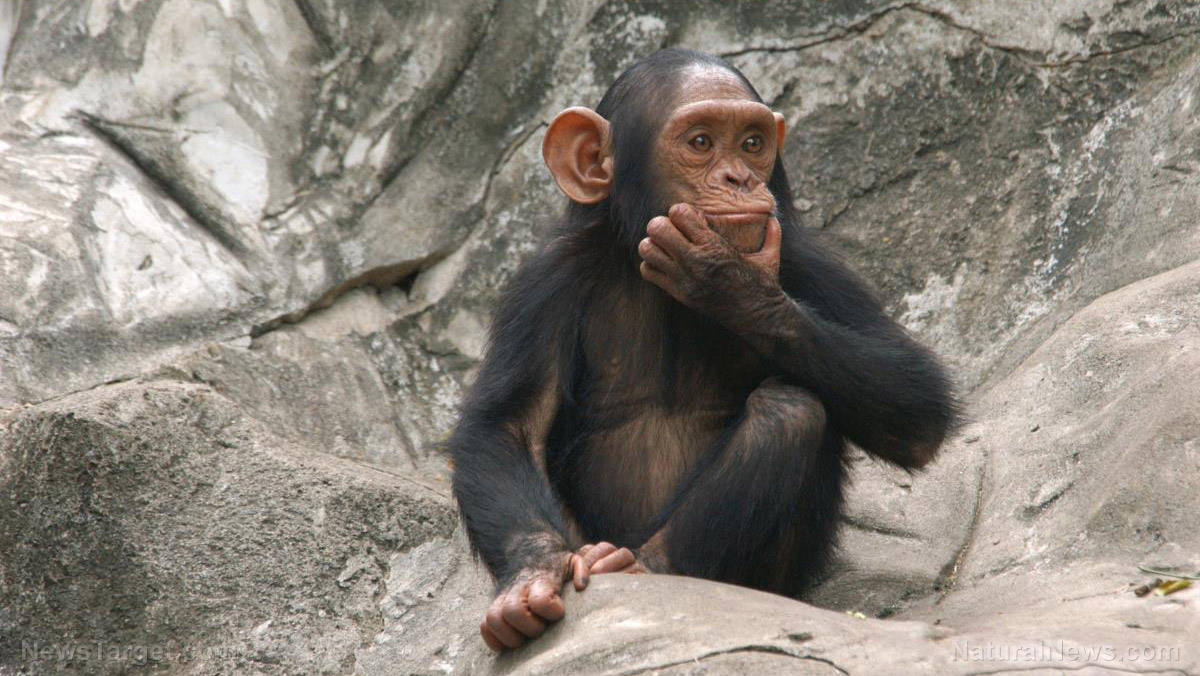Theory of mind: Fascinating study suggests great apes can understand each others’ mental states, just like humans
10/09/2020 / By Virgilio Marin

A recent study published in the journal PNAS suggests that apes can understand each other’s mental states, such as desires, beliefs and false beliefs about reality.
This ability, called the theory of mind, was once thought to be unique to humans. It’s described as a cognitive skill that allowed a person to decipher what others think or feel based on their knowledge of the situation and the people involved.
Researchers from Kyoto University in Japan and the University of St. Andrews in Scotland argue that great apes, such as chimpanzees, bonobos and orangutans, may also be equipped with this ability.
Apes consult experience to read behavior
The researchers previously conducted a false belief test on great apes. A false belief test is commonly used to examine the theory of mind in children and primates. In the test, the apes watched a movie in which a human dressed as a gorilla hid an object while a human actor was away. Their eye movements were tracked as they watched.
While watching the movie, the apes in the study seemed to draw on experience to guess what the actor was going to do next. This suggests that they consulted prior knowledge to read the actor’s mental state.
They looked longer at where the actor last saw the object, apparently aware of the actor’s false belief about the object’s location. However, the researchers didn’t test for an alternative explanation, the “behavior rule,” which states that the actor tends to go to the location that the object was last seen.
For their latest study, the researchers exposed two groups of apes to either one of two barriers: an opaque or a see-through barrier. Both looked identical from afar but differed in their opacity. Afterward, the two groups watched a movie similar to that of the previous experiment. This time, however, a human actor hid behind a see-through barrier while the object was moved to another place.
The apes exposed to the opaque barrier were anticipating that the actor would likely go to the location where he last saw the object. Those exposed to the trick barrier, however, were anticipating that the actor would not likely go to the original location. This ruled out a purely behavioral explanation; the two groups were anticipating the actor’s behavior differently based on their own experiences with the barriers.
“The results suggest that we share this ability with our evolutionary cousins,” said lead author Fumihiro Kano of the Wildlife Research Center at Kyoto University. However, he admitted that further research is needed to address some issues. For instance, tracking false beliefs about an object’s location is a simple feat when compared to what humans can actually do. (Related: Endangered bear species can mimic each other’s facial expressions to communicate.)
He plans to refine their methods by testing whether apes could understand someone’s beliefs about an object’s identity. This can show what happens if the object gets swapped for something else.
“We plan to continue refining our methods to test further non-mentalistic alternatives to the theory of mind in nonhuman animals,” Kano said.
This new study is just the latest to show that animals possess cognitive abilities previously thought to be exclusive to humans. Another study, published in the journal Animal Cognition, suggests that dogs can adopt the perspective of humans and follow their gaze for food. By doing so, dogs may be able to understand what people see and know, an ability that’s integral to the theory of mind.
Read more articles about the theory of mind in animals at WeirdScienceNews.com.
Sources include:
Tagged Under: animals, apes, cool science, Evolution, false belief test, mental states, mind reading, primates, Psychology, theory of human, weird science, wildlife
RECENT NEWS & ARTICLES
COPYRIGHT © 2017 MIND BODY SCIENCE NEWS



















